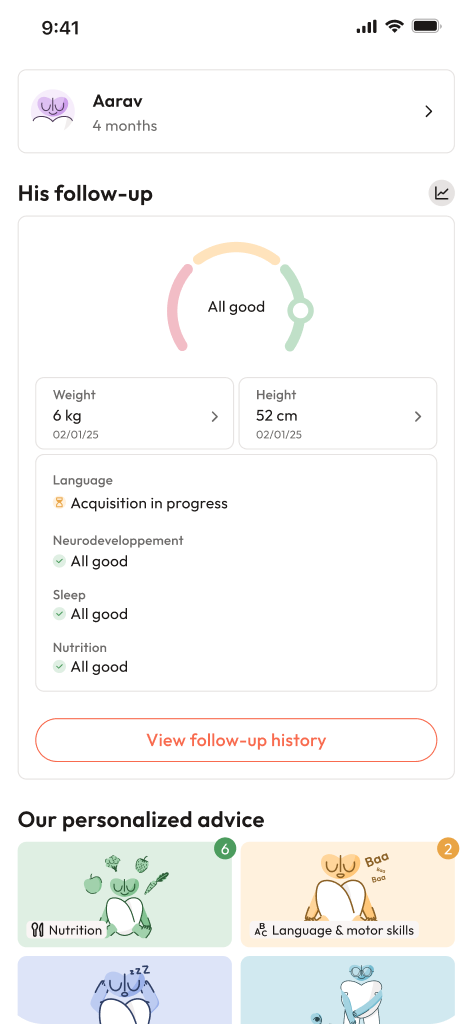Expectant parents, the journey of pregnancy is often accompanied by waves of anticipation, hope, and sometimes, those whispers of doubt that creep in late at night. Have you ever found yourself yearning to hear that reassuring thump of your baby’s heartbeat between clinic visits? This longing is neither rare nor unreasonable—it’s human. Yet, standing at the crossroads of curiosity and safety, a cascade of questions arises: Is using a fetal Doppler at home reliable? Safe? How does it differ from clinical monitoring, and what if you can’t catch that precious sound immediately? The world of fetal Doppler, with its scientific roots and practical edges, may appear a little technical at first, but armed with the right information, it becomes much clearer. This guide aims to illuminate every corner: how fetal Doppler works, when and how to use it, the advantages and pitfalls, safety nuances, and above all, how to foster a calm, well-informed approach—be it for a fleeting moment of reassurance or an essential clinical check.
What Exactly Is a Fetal Doppler and How Does It Operate?
A fetal Doppler isn’t just a gadget; it’s a gateway to the hidden rhythms of fetal life. What you’re actually holding is a small, handheld ultrasound device leveraging Doppler effect physics. Every time you switch it on, the probe transmits gentle ultrasound waves (waveforms with frequencies commonly between 2–3 MHz) across the maternal abdomen. Blood cells in the fetal heart bounce these waves back at a slightly shifted frequency as they move—this subtle shift, known as the Doppler effect, is analysed, producing the sound of heartbeat and a numerical BPM readout.
Much like the pulse-oximeter interprets the flow of oxygen in your blood, the fetal Doppler records and translates subtle, rapid movements of fetal heart tissue. It doesn’t give images like traditional ultrasound but brings forth real-time sound—a galloping rhythm or a whooshing of blood through the placenta. And though it can be emotionally uplifting to hear, remember: what you hear is one moment in time—not the full movie.
Key terms often encountered include:
- Mechanical Index (MI) and Thermal Index (TI), two safety parameters displayed on advanced devices, pointing to potential tissues’ mechanical and heating effects. Lower values, shorter exposures: gentler for baby.
- Gel coupling—without a thick dab of water-based gel, those sound waves stumble on the air gap, muffling clarity. That’s why a little cool gel between probe and skin is non-negotiable.
Curious about history? The journey of Doppler in obstetrics began in the 1950s, blossomed with standards like IEC 60601-1, and today sees machines with regulatory approvals—CE marking, prescription-only status in some countries—safeguarding the clinical environment and, by extension, families.
From Clinics to Home Use: Different Types, Features, and Practicalities
Clinical-Grade Doppler Versus Pocket Doppler: What Sets Them Apart?
Step into a clinic, and you’ll find a clinical-grade fetal Doppler: robust, wired to monitors, equipped with digital displays, and trusted by medical professionals. Interchangeable probes, precise pulsed-wave Doppler for targeted vessel assessment, accurate TI/MI settings—for hospitals and specialists, these features are daily basics.
At home, the picture changes. Pocket fetal Dopplers offer portability and emotional comfort, and bring that magical fetal heartbeat directly to parents’ hands. However, their precision can’t rival their clinical cousins. The absence of regulatorily enforced settings and a tendency for variable signal quality mean these home-use versions are perfect for hearing a heartbeat—but cannot diagnose or replace medical advice.
Some key options available include:
- Digital BPM display (a numerical backup to the audio)
- Option to record baby’s heartbeat (a lovely keepsake!)
- Interchangeable probes (2 or 3 MHz), adjustable gain
But beware of smartphone “Doppler” apps—relying on microphones alone, they cannot physically create or receive ultrasound, and should not substitute real devices.
Understanding Doppler Modes: Continuous-Wave, Pulsed-Wave, and Colour Guidance
- Continuous-wave Doppler: Continuously sends and receives ultrasound waves. Great for detecting heart tones but lacks specificity for signal depth.
- Pulsed-wave Doppler: Allows targeting a specific depth—essential for advanced vessel analysis in high-risk scenarios (think umbilical artery PI, MCA PSV).
- Colour Doppler: On clinical ultrasound, superimposes directional blood flow on images. Not available on basic home devices—this is more for medical professionals evaluating finer details such as “brain sparing”.
Why Does Frequency Matter?
- 2 MHz probes go deeper—handy during mid to late pregnancy or with a thicker abdominal wall.
- 3 MHz probes shine early on—sharp and clear when the baby lies close to the surface.
Struggling to hear? Placental position, maternal body type, and fetal acrobatics can all play a part.
What Sound Can You Expect and How to Tell It Apart?
What crackles through the device? Is it the “gallop” of the fetal heart, the gentle hush of the placental flow, or your own steady pulse? The fetal heart typically thumps at 110–160 BPM—much faster than your own. Feeling lost? Place a finger on your wrist and count. If the device matches your own pulse, shift the probe. It’s the unexpectedly fast rhythm you’re after—sometimes elusive, but always extraordinary to discover.
Clinical Indications: When, Why, and How is Fetal Doppler Used Medically?
Fetal Doppler is not a routine passenger at every visit for all pregnancies; its superpower shows in high-risk circumstances, where every detail counts. Providers bring it in for:
- Suspected fetal growth restriction (FGR)
- Preeclampsia or gestational high blood pressure
- Suspected fetal anaemia (using indices like middle cerebral artery peak systolic velocity (MCA PSV))
- Multiple pregnancy
- Diabetes or known placental disorders
It’s a specialized add-on, offering a look at the fetus’s well-being, not an all-encompassing verdict. For example, if preeclampsia is a concern, the uterine and umbilical artery measurements help estimate placental resistance or warning signs of deterioration. Monitoring may shift to daily if a high-risk pattern emerges; a normal signal often means weekly follow-up suffices.
Clinical Versus Home: Where Does Each Approach Shine?
In Clinics
- Intermittent auscultation: Quick, targeted listening—often during pregnancy checks or low-risk labour.
- Continuous CTG/NST: Deep-dive, minute-by-minute review of heart rate variability, accelerations, decelerations—details impossible to catch with a handheld fetal Doppler.
- Targeted Doppler flow studies: Expert assessment of specific vessels or in selected situations (for twins or suspected anaemia, for example), guiding intervention and planning.
At Home
Listening at home with a fetal Doppler, emotion and information intertwine. It’s a chance to bond, but it’s not a clinical tool. It cannot outsmart decreased fetal movements, unexplained pain, or any new symptom—these moments still demand a medical ear. False reassurance or, conversely, spiraling worry from a missed signal are real risks. Sometimes, more listening equals more anxiety—not peace.
Technique tips for the home setting:
- Steady hands, plenty of ultrasound gel, reclined and relaxed—try low and mid-abdomen first trimester, then shift higher as pregnancy progresses.
- Try for 3–5 focused minutes. No heartbeat? Step back, try again later, and reach out to your provider if you’re worried.
- Always double-check: Is it the right rate? Does it match your own pulse?
Practical Steps for Home Use and Safety: A Parent’s Primer
Preparing and Positioning: Setting Up for Success
- Read all instructions, check batteries, and set up in a quiet space.
- Recline, with a slight left tilt if lying flat is uncomfortable.
- Apply the gel generously. Begin just above the pubic bone; move slowly, make gentle circles; patience is often rewarded.
Techniques by Trimester
- First trimester: Very low on the belly, slow movements.
- Second trimester: Aim upwards, following the rising uterus.
- Third trimester: Seek the area where you sense the baby’s back. With an anterior placenta, experiment with angles.
Keep sessions brief (a few minutes suffices) and log results if requested by the healthcare team.
Interpreting Results and Troubleshooting Challenges
- Heartbeat around 110–160 BPM? That’s the usual range.
- Persistent rates below or above (bradycardia, tachycardia)? Time for medical assessment.
- Can’t find a heartbeat and baby isn’t moving? Or new pain, bleeding? Stop listening and contact your provider quickly.
Common pitfalls at home:
- Mistaking the maternal pulse
- Insufficient gel or off-target positioning
- Batteries gone flat
When in doubt, seek out your provider. No shame in professional backup.
Medical Nuances: Doppler Indices, Signals, and Clinical Decision-Making
Clinicians look at more than just a number—they examine the pulsatility index (PI) in the umbilical artery, search for absent or reversed blood flow, scan the MCA for signs of anaemia, and watch for signs of “brain sparing”. All these terms boil down to understanding and reacting to risk. If the umbilical artery signal is normal, expect weekly reviews; abnormal without loss of flow means twice weekly; absent or reversed flow merits even closer monitoring and possibly hospitalisation.
Safety, ALARA Principles, and Regulatory Guidance
ALARA principle—“as low as reasonably achievable”—means always using the lowest power and the shortest time to get what’s needed, nothing more. While fetal Doppler technology has not been shown to harm when used properly, overuse is discouraged. Long sessions? Not needed. High output? Stick to the lowest gain that provides a clear heartbeat. It’s not about how often you can hear, but making each session count.
Many professional agencies and regulators, including the FDA, continuously remind families: home devices have limits. Safety is not just about the device, but also about listening to your instincts and connecting promptly with your care team when symptoms arise.
Choosing and Maintaining Your Fetal Doppler: Features and Hygiene
Considerations before purchasing or using:
- Standard frequencies are best: 2–3 MHz for fetal Doppler.
- Digital or audio output? Both are useful; a number display aids tracking.
- Certifications (FDA clearance, CE Mark) speak to reliability and testing standards.
- For digital/Bluetooth models, review privacy settings.
- Cleaning is simple: Clean the probe with mild soap and water or specific disinfectant wipes after use; don’t immerse unless labeled waterproof. Store safely away from heat or sunlight.
Alternatives and Special Considerations
Sometimes, basic is best—a fetoscope or even counting kicks is as valuable as fancy digital tools. For those with twins, high BMI, or an anterior placenta, clinical ultrasound can be more reliable. And never underestimate the impact of maternal awareness of fetal movement; when in doubt, trust your perception and seek medical advice.
Myths and Facts: Clearing the Fog
- Home fetal Doppler checks do not improve pregnancy outcomes and may foster anxiety or unneeded reassurance.
- Hearing “just any” heartbeat is not proof of ongoing well-being—growth, fluid, and placental evaluations remain irreplaceable.
- Diagnostic ultrasound, including fetal Doppler, is considered safe when used sensibly.
- Price does not always equate to performance; prioritise proven reliability and professional support.
Key Takeaways
- The fetal Doppler offers an accessible window into baby’s world, supporting both bonding and reassurance, but is not a replacement for professional prenatal care.
- Typically, fetal Doppler picks up a heartbeat via abdomen from 9–12 weeks of pregnancy; signal clarity varies with many factors like placenta position and fetal movement.
- Use the ALARA principle—brief, purposeful sessions with the lowest necessary output.
- For clinical insights, Doppler indices such as PI, AEDF, REDF, and MCA PSV provide far greater context than home listening offers.
- If you are worried—by abnormal rates, reduced fetal movement, severe pain, bleeding, or inability to find a heartbeat—consult your care team without delay.
- For tailored advice, trustworthy health resources, and free child health questionnaires, try the Heloa app.
Questions Parents Ask
Will my provider use a fetal Doppler during labour, and how is it different from other monitoring?
Many clinicians use a handheld fetal Doppler to check the baby’s heart rate at intervals during labour—after a contraction or if there are any changes. Intermittent Doppler checks provide a quick glimpse and allow more comfort and movement during labour. Continuous electronic monitoring (like CTG) gives a detailed printout of heart rate patterns—variability, accelerations, decelerations—features not shown by a simple Doppler. Both systems have their place. If you have special preferences for monitoring, “open the conversation”—share your thoughts with your care team so together, you can plan what works best for you and baby.
What sort of gel is used with fetal Doppler—is it safe?
The gel used is generally water-based, smooth, and non-greasy, made for good contact between probe and skin and to enhance clarity. It shouldn’t cause skin irritation and is widely considered safe for mother and baby. If you have particularly sensitive skin or suspect an allergy, a patch test on your arm is helpful. Don’t substitute oils or scented lotions, and always check with your provider if you’re uncertain about brands.
How should a home fetal Doppler be cleaned and stored?
- Always gently wipe off the gel after every use, using a soft cloth and mild soap with water or appropriately recommended wipes.
- The probe should not be submerged unless waterproof. Keep all cleaning easy, avoid aggressive solvents or rough cleaning.
- Let dry fully before putting it away in a cool, dry place, away from sunlight or curious little hands. Take batteries out if not using for a while; for rechargeable models, follow care tips provided.
- Shared use? Always ask your clinician about sanitation between uses.
Caring for the device keeps it reliable—and keeps focus on bonding and reassurance, not technical troubles or infection worries.










